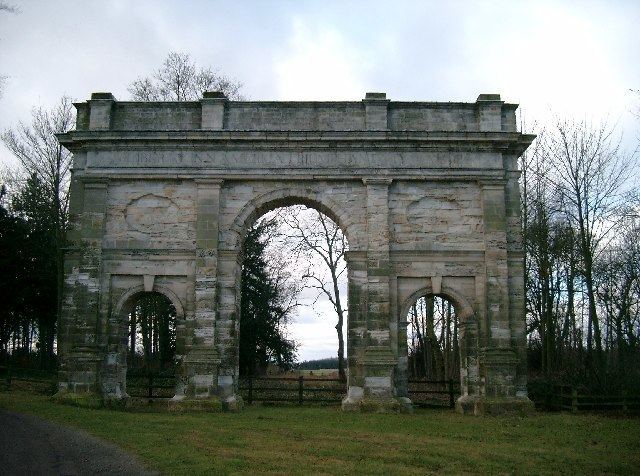Name Thomas Leverton | ||
 | ||
Thomas Leverton (c.1743 – 23 September 1824) was an English architect.
Contents
Life
He was born in Waltham Abbey, Essex, where he was baptised on 11 June 1743, the son of the builder Lancelot Leverton. Having learned his father's trade he acquired the skills of architecture with the help of patrons.
He built houses both in London and the countryside, including Watton Wood Hall (now Woodhall Park), Hertfordshire, built in 1777–82 for Sir Thomas Rumbold, which includes a hall decorated in the Etruscan style. In 1780 he designed Plaistow Lodge (now Quernmore School) for Peter Thellusson at Bromley, Kent in a style suggestive of Adams. His domed refit of Scampston Hall near Malton, Yorkshire (1803), reflected the work of Wyatt. Other houses by Leverton, now demolished, included Woodford Hall, Essex, built in 1775 for William Hunt, and Riddlesworth Hall, Norfolk, built in 1792 for Silvanus Bevan III.
In the grounds of Parlington Hall, Yorkshire, he built a triumphal arch in commemoration of the American victory in the War of Independence for Sir Thomas Gascoigne. Leverton showed the design at the Royal Academy in 1781.
He has sometimes been credited with the design of Bedford Square in London: while this is uncertain he did at least design some of the interiors, including those at No 13, where he lived from 1795. His chief skill lay in the innovatory design of small-scale interiors. Describing his work at Woodhall Park, Nikolaus Pevsner said that Leverton's interiors "have a style, decidedly their own, different from Adam's or Chambers's or Hollands's" their character coming out most clearly in the central staicase hallway, "profusely but very delicately decorated with plaster à la antique".
Leverton was surveyor to the Grocers' Company, for whom he built a new hall, completed in 1802. A brick building with stone facings (including a rusticated basement level and Tuscan pilasters), it was described in a contemporary account as "though not a splendid fabric ... well adapted to its enclosed situation." The foundations proved inadequate, and by 1814 cracks had developed in the building. He was also surveyor to the theatres royal in London and the Phoenix Fire Insurance Company, London, for which he built offices in Lombard Street in about 1787 and a fire engine house at Charing Cross, both later demolished.
He took over as architect at the Department of Land Revenue after the retirement of John Marquand. In this capacity he, along with his pupil, Thomas Chawner, submitted a plan for the improvement of the crown property of Marylebone Park Farm (now Regent's Park) in July 1811, although John Nash's plans were preferred.
He exhibited at the Royal Academy from 1777 until 1803.
He was a Justice of the Peace (JP) for Westminster, Middlesex, Surrey and Kent.
Family
He was married twice, firstly in 1766 and then, in 1803, to Rebecca Craven of Blackheath, but his only son predeceased him. His niece married a pupil, James Donaldson, and was the mother of Thomas Leverton Donaldson, who became Professor of Architecture at London University.
Death and legacy
Leverton died 13 Bedford Square on 23 September 1824, and was buried at Waltham Abbey.
The Thomas Leverton Charity, founded by money left in Leverton's will, is intended to aid deserving women in distress, preferably widows resident in the united parishes of St Giles and St George. It has since been amalgamated into the St Giles-in-the-Fields and Bloomsbury United Charity.
